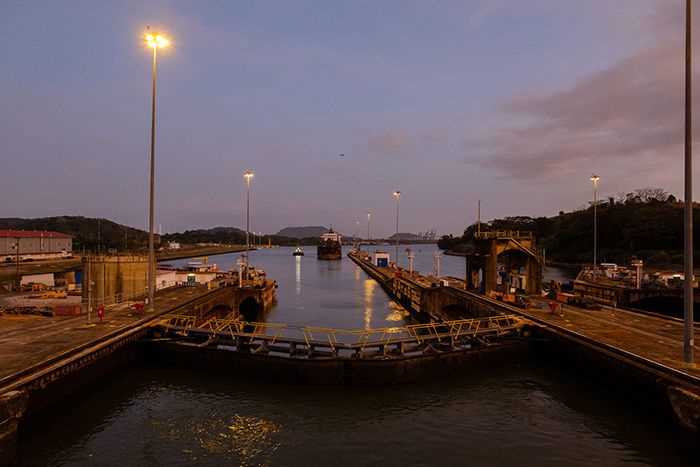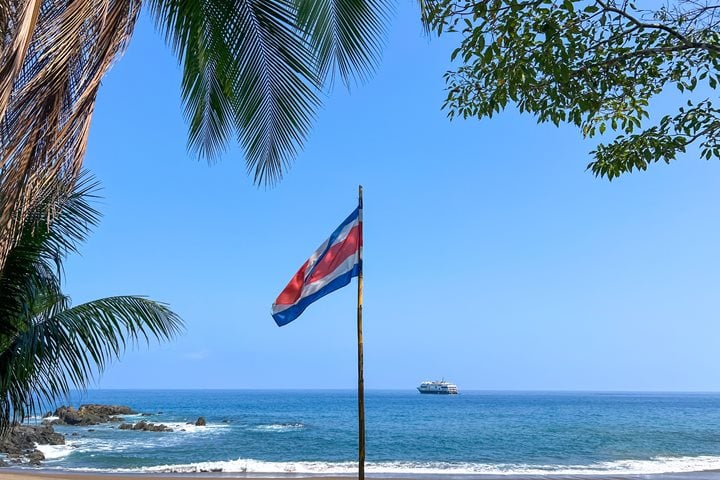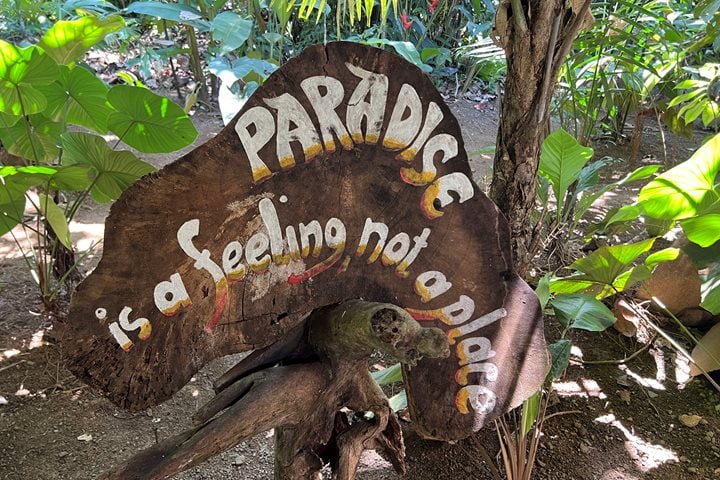This morning we entered the Panama Bay, or Golfo de Panama, on our way to one of the highlights of the trip: the Panama Canal. Transiting through the Panama Canal is always a memorable event. As the ship gets lifted up through the locks, seemingly easily, it is difficult to appreciate the magnitude of this operation.
The United States was not the first country to attempt building a canal across the Panamanian Isthmus. This honor falls to France, when in 1888 the attempt to dig a sea level canal was done by a company founded by Ferdinand de Lesseps. He was fresh from his success building the Suez Canal, and thought he could do the same here through the American jungle. But by 1889 the company was bankrupt and de Lesseps was ruined and disgraced. In 1894 another French attempt was made but again they were not successful.
In 1904 the United States took over and discovered that all the French infrastructure was of no use, as it was rusted and degraded. After a careful geological review, it was decided that a sea level canal would be impossible, due to the very different tidal changes between the two bodies of water on either side. The American plan was to build a dam to hold the waters of the Chagres River to a depth of 85 feet. Locks would then be built to raise and lower ships through the system. A set of three massive pairs of locks would raise the ships 85 feet into, or out of, and even though their height is not equal in every case, in average they are 85 feet in height.
After 10 years of hard work, many lost lives, and some new and very important medical discoveries, in 1914 the Panama Canal was inaugurated and opened to the largest ships the world had seen until then. The transit of SS Ancon the man-made Gatun Locks. The locks are 110 feet wide and 1,050 feet long on August 15, 1914, marked the official opening of the Panama Canal, which took its place among one of the most magnificent engineering works of all time. The Canal actually opened six months ahead of schedule and under budget. The credit for this belongs to George W. Goethels, who was the chief engineer of the Panama Canal during the last seven years of its construction.
We began our crossing today from the Pacific side. The first thing thing we saw was the canal’s entrance, with the Bridge of the Americas leading us into the Miraflores Locks, then Miraflores Lake, the Pedro Miguel Locks, through the Culebra (or Gailliard Cut), and finally into the Gatun Lake, where our last adventure waits for us.









